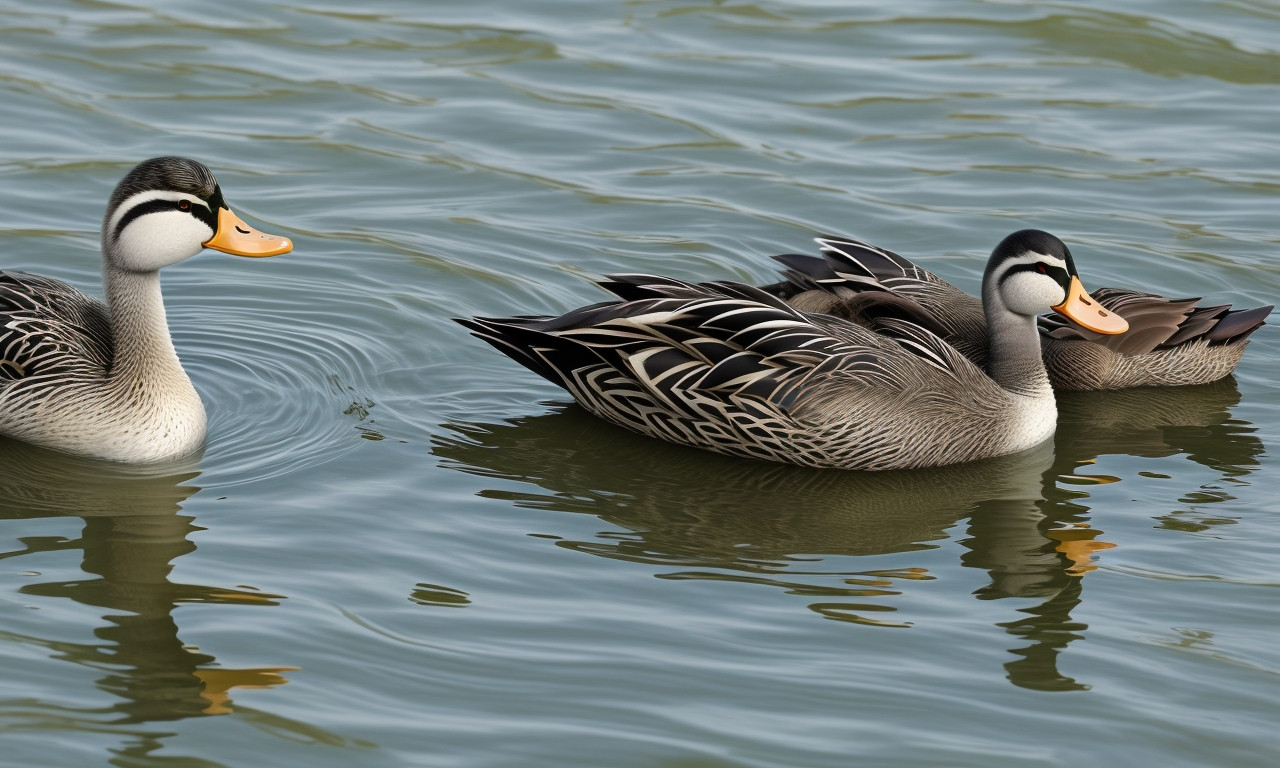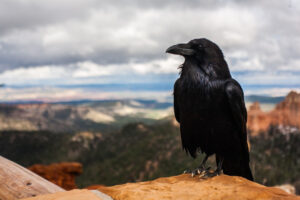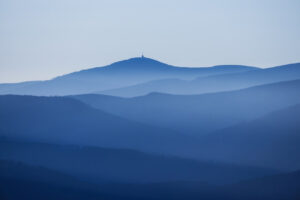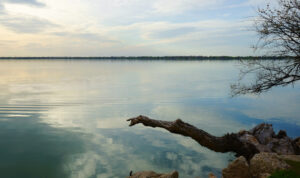Florida, the Sunshine State, with its sprawling wetlands, extensive coastlines, and numerous lakes, is a paradise for birdwatchers and nature enthusiasts. Among the state’s feathered attractions are a variety of ducks that provide an unmatched spectacle for those keen to explore the richness of Floridian wildlife. Florida’s natural landscapes serve as a vital habitat for both resident and migratory waterfowl, making it a premier destination for observing these fascinating birds in their natural environment.
Whether you’re an avid birder with a life-list to tick off, or someone who appreciates the serene beauty of a duck gliding across a still lake at dawn, Florida has it all. From the flamboyant Wood Duck to the elusive Masked Duck, the array of species will delight and educate visitors about the waterfowl wonders teeming within the state’s borders.
Discover the Duck Species of Florida
The Wood Duck: Nature’s Artwork
The Wood Duck, known scientifically as Aix sponsa, stands out among its peers due to its striking appearance. Nesting in tree cavities close to water bodies, this duck’s iridescent plumage makes it a favorite subject among photographers and birdwatchers alike.
Related article; hawks in georgia
- Identification: Wood Ducks are easily recognizable by their colorful markings. Males boast a glossy green and purple head with bold white stripes, while females display a more subtle brownish-grey feathering with a distinctive eye ring.
- Habitat: They favor freshwater swamps, marshes, and streams—a majestic sight amongst the cypress trees and Spanish moss-draped settings.
- Behavior: Agile and acrobatic, Wood Ducks are known to perch high in trees, an unusual behavior for ducks, and can also take flight swiftly, navigating the forest canopy with ease.
The Mottled Duck: Florida’s Resident Quacker
Often confused with the more widespread Mallard, the Anas fulvigula or Mottled Duck, retains a unique status in Florida. This dabbling duck is a year-round resident that has a special preference for the state’s marshes and wetlands.
Related article; michigan woodpeckers
- Identification: The Mottled Duck carries a subdued palette of browns and buffs with an orange bill, distinguishing it from its Mallard cousins.
- Habitat: You’ll find them across shallow marshes and coastal ponds where they feed on aquatic plants and small insects.
- Behavior: These ducks are less migratory than others, instead, establishing their presence firmly within the localized wetlands of Florida.
The Ring-necked Duck: The Gem of Winter Waters
As winter sets in, Florida’s waterways play host to the Ring-necked Duck, Aythya collaris, a frequent visitor often seen mingling in flocks on lakes and ponds.
Related article; Do Crows Talk? Here’s Everything You Need To Know
- Identification: Despite its name, the bold white ring around its bill is more noticeable than the subtle ring around its neck. These ducks exhibit a striking contrast between their dark back and light flanks.
- Habitat: They thrive in the freshwater bodies during the cooler months, often spotted diving for their meal.
- Behavior: Recognized for their agility, Ring-necked Ducks are adept at underwater foraging, often disappearing below the surface in search of vegetation and small fish.
The Northern Shoveler: Nature’s Filter Feeder
With its oversized, spoon-shaped bill, the Northern Shoveler, Spatula clypeata, cuts a distinctive figure against Florida’s aquatic backdrops. Migrating to the state during winter, they exhibit a unique feeding method that sets them apart.
Related article; Of The Prettiest And Most Beautiful Birds In The World
- Identification: The male is a vibrant mix of white, chestnut, and green, while the female dons a more camouflaged brown plumage. The oversized bill is the real giveaway.
- Habitat: These ducks prefer the nutrient-rich shallow marshes and flooded fields where they can skim and filter feed.
- Behavior: Their bill acts as a sieve, filtering out tiny organisms from the water, a method rarely seen in other duck species.
The Masked Duck: Florida’s Secretive Visitor
Among the most elusive of Florida’s ducks is the Masked Duck, Nomonyx dominicus. This small, secretive bird is a rare sight, making any encounter a noteworthy event for birdwatchers.
Related article; Fascinating Woodpeckers in Louisiana
- Identification: Sporting a rusty-brown body with a distinct black face mask, these ducks are a covert presence in Florida’s waterways.
- Habitat: They keep to densely vegetated freshwater ponds and marshes, skillfully concealed amongst the reeds.
- Behavior: Masked Ducks are known for their skulking nature, spending much of their time hidden in aquatic vegetation, only venturing into open waters with caution.
The Importance of Habitat Conservation for Florida’s Ducks
The preservation of Florida’s natural waterways and wetlands is not only essential for the continued survival of native duck species, but also for the countless migratory birds that seek respite in the state’s favorable climate. Conservation efforts are key to maintaining the delicate balance of these ecosystems. Wetland degradation and loss of habitat due to urban development and pollution are significant threats to waterfowl. The engagement of the community in conservation practices and support for sanctuaries and wildlife preserves remain paramount.
Related article; Stunning Arctic Birds and Seabirds You Must See
- Wetlands Reclamation: Initiatives to reclaim and restore natural wetlands are vital, providing breeding and foraging grounds for waterfowl.
- Pollution Control: Keeping Florida’s water bodies clean ensures a healthy habitat, free of toxic substances that can affect the ducks’ food sources and nesting areas.
- Protection Legislation: Strong legal frameworks help to mitigate the impact of human activity, conserving the natural splendor of Florida’s diverse habitats.
Birdwatching Tips: How to Best Enjoy Florida’s Duck Diversity
To maximize your birdwatching experience in Florida, consider the following tips:
Related article; Small Black Bird With White Belly
- Best Time to Visit: While ducks can be seen year-round, the winter months from November to March offer the greatest diversity, with migratory species joining the resident population.
- Equipment: A good pair of binoculars or a spotting scope can enhance your viewing experience. Don’t forget a field guide to help with identification.
- Ethical Practices: Maintain a respectful distance, use quiet movements, and avoid disturbing the ducks, especially during nesting season.
- Join Guided Tours: Local wildlife experts can provide invaluable insights and lead you to some of the best birdwatching spots in Florida.
Conclusion: Embracing Florida’s Avian Abundance
Ducks are just a fraction of the bird species that make Florida a premier destination for wildlife observation. By embracing and protecting the state’s waterfowl riches, both residents and visitors can continue to enjoy the wondrous display of ducks that grace the landscapes of the Sunshine State. The vibrant feathered friends of Florida are waiting—camouflaged among the mangroves, nestled within the reeds, or artfully gliding across the water’s surface—to be discovered, appreciated, and safeguarded for generations to come.
Related article; The Woodpeckers in NC
Florida’s ducks are an intricate part of the state’s ecological tapestry. Whether you’re a dedicated birdwatcher or simply someone who treasures the simple joys of nature, the ducks of Florida offer a compelling and colorful window into the world of avian wonders. As you explore the marshes, lakes, and coastlines, keep your eyes peeled for these waterfowl wonders and immerse yourself in the beauty and diversity that the Sunshine State has to offer.




